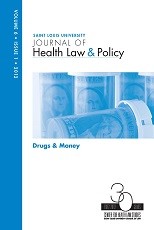Jennifer E. Spreng

Extract
Conclusion
Pharmacists are already involved in litigation over conscience clauses; it is probably only a matter of time before a woman sues a pharmacist for wrongful conception. Changes in the pharmacy profession and correlative tort duties mean a common law or statutory duty to dispense or sell emergency or daily oral contraceptives is not outside the realm of possibility. Many religious pharmacists have compelling reasons to refuse to sell, but federal Free Exercise protections are currently uncertain. State statutory conscience clauses offer some protection and do not violate the Establishment Clause. Therefore, more states should not hesitate to provide
this protection to all healthcare providers.
Spreng JE. Conscientious Objectors Behind the Counter: Statutory Defenses to Tort Liability for Failure to Dispense Contraceptives. 1 St. Louis U. J. Health L. & Pol’y 337, 337-40 (2008)

